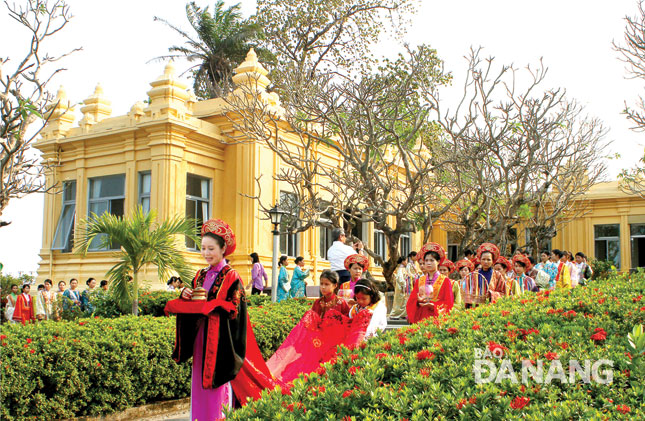Museum of Cham Sculpture: a time-honoured attraction
The Da Nang Museum of Cham Sculpture, located by the Han River in downtown Da Nang, has confirmed its firm stature as a place to preserve and promote unique cultural heritage in the city, and in Viet Nam as a whole. This is a one of the city’s best places to visit thanks to its great historical and cultural values, and its unique architectural styles.
 |
In recent times, the museum has welcomed world VIPs. Included were Singaporean Deputy Prime Minister Tharman Shanmugaratnam, Secretary General of the Inter-Parliamentary Union Martin Chungong, Indian President Ram Nath Kovind, and Cambodian King Norodom Sihamoni.
It also noticeable that, during the APEC Economic Leaders’ Week 2017 held in Da Nang in late 2017, high-ranking officials and the wives of the APEC economies’ leaders paid visits to this museum. It is no denying that the museum is very inviting to foreigners, including the world leaders, during their stay in this beautiful seaside city.
The first structure in what is now the Da Nang Museum of Cham Sculpture was built in 1915.
The establishment of a museum of Cham sculpture in Da Nang was first proposed in 1902 by Henri Parmentier, a prominent expert of the Ha Noi-based L’École Française d’Extrême-Orient (EFEO). The first building was designed by two French architects, M. Deleval and M. Auclair, who were inspired by Henri Parmentier to use traditional Cham elements in the design. Over the years, the museum has been extended twice, but the unique combination of Cham and French colonial architecture has been preserved.
The museum is thought to have been one of the first 3 museums to be established in Viet Nam. With support from the EFEO, the city’s museum has become one of the world's most famous collections of Cham artifacts.
The museum is now home to a collection of 1,800 pieces of various-sized Cham sculpture. Of them, 500 artifacts are actually on display in the museum, whilst the remainder are being preserved in storehouses.
The majority of the sculptures date back to between the 7th and the 15th centuries and are made from sandstone in different art styles. They all showcase the cultural exchanges and development of Oriental countries during medieval times, and represent the pinnacle of the Champa civilisation.
In particular, the museum’s exhibits are arranged in a geographic order according to the places where they were found. This arrangement helps visitors understand the various styles of Cham architecture, which differs according to local lifestyles and culture.
In 2011, the museum was recognised as a first-class national museum by the Vietnamese Ministry of Culture, Sports and Tourism. Three historical artifacts on display at the museum have been recognised as national precious exhibits by the Vietnamese government. In addition, the museum has been ranked amongst the most visited in Viet Nam.
Despite the economic difficulties and the fierce competition between local attractions, the increasing number of guests proves that the museum is emerging as a popular destination for both domestic and foreign visitors.
The arrival of the French in Viet Nam in the 19th century left its mark on the architectural landscape. The old buildings have diverse architectural styles but all are located in harmonious surroundings with pavements, trees and beautiful landscapes.
In 2017, the museum, in co-operation with the Southeast Asian Art Academic Programme, School of Oriental and African Studies, and University of London, has launched a new book after a two-year project.
The English-language book, titled ‘Vibrancy in Stone – Masterpieces of the Da Nang Museum of Cham Sculpture’, provides a collection of high-quality photographs highlighting the museum’s attractions to mark its 100th anniversary.